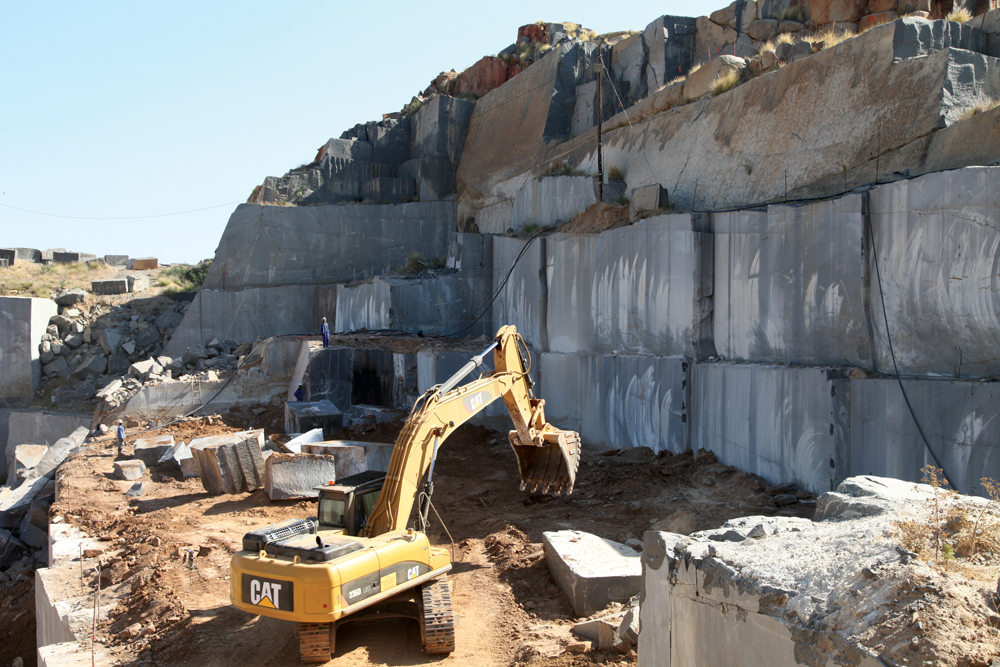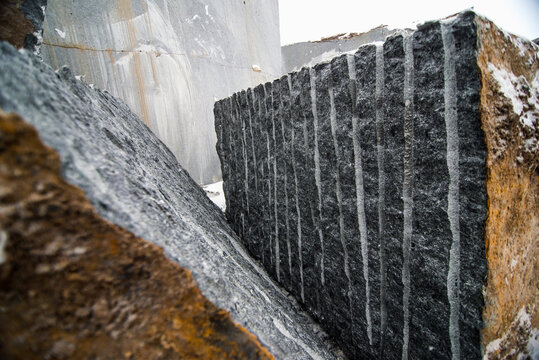Revealing the Mysteries of Granite Quarrying: Where Toughness and Beauty Meet
The world of granite quarrying is a realm where the raw toughness of nature merges with human virtuosity to produce frameworks that stand the test of time with an air of elegance. From the depths of quarries to the meticulous polishing in workshops, the process of changing granite into building marvels is an intricate dance of practice and innovation. As we peer into the midsts of this old craft, we start to uncover the covert intricacies that form the extremely essence of our built setting.
The Beginnings of Granite Quarrying
In the record of architectural history, the origins of granite quarrying are shrouded in a tapestry of ancient workmanship and geological wonders. Dating back to old Egypt and Mesopotamia, the removal of granite from quarries marked the start of a trip that would ultimately bring about the production of some of the globe's most famous frameworks.
Granite quarrying's origins can be traced to the proficient craftsmens that identified the stone's durability and visual charm. Through a mix of primitive devices and sheer resolution, these very early quarry workers unearthed granite blocks that would certainly become the building blocks of civilizations.
As people evolved, so did the methods of quarrying granite. The Romans, renowned for their design prowess, developed innovative approaches for removing granite to build monoliths, holy places, and roadways that stood the examination of time.
The tradition of these ancient quarrying techniques remains to shape modern-day design, with granite remaining a symbol of strength and style in building and construction tasks around the world. (granite quarries in south africa)
Devices of the Quarrying Profession
The evolution of granite quarrying methods from old human beings to modern times highlights the important function played by the devices of the quarrying sell forming the market's techniques. In old times, quarrying devices were fundamental, typically consisting of chisels, hammers, and wedges made from materials like bronze or iron. These tools called for substantial workforce and time to essence granite blocks from quarries.

Furthermore, the intro of pneumatic devices and high-powered equipment has significantly minimized the physical labor required in quarrying operations, enhancing employee security and productivity. As the quarrying sector remains to introduce, the tools of the trade stay at the leading edge of driving progression and forming the future of granite extraction.
Extracting Blocks of Granite
Utilizing accuracy machinery and advanced methods, see here the removal of granite blocks from quarries has become a sophisticated procedure in the contemporary quarrying market. The preliminary action includes recognizing the place and dimension of the granite deposit to identify the most effective removal approach. When an appropriate site is picked, the extraction process begins with the exploration of holes for the positioning of nitroglycerins. Regulated blowing up methods are after that employed to disintegrate the granite into manageable areas.

Sprucing Up and Ending Up Methods
To attain a flawless surface area on granite blocks, skilled artisans utilize a collection of careful polishing and finishing techniques. After the first removal and shaping procedures, the granite obstructs go through a thorough sprucing up stage to improve their natural charm and longevity. One common technique utilized in brightening granite is diamond abrasion, where industrial diamonds are made use of to grind and brighten the rock to a smooth surface. This process not just develops a shiny surface but also makes certain harmony in color and texture across the granite block.
In addition to sprucing up, completing techniques are used to additional fine-tune the granite's look. These methods may consist of flaming, developing, or brushing, each offering unique structures and coatings to match various visual choices. Flaming, as an example, entails subjecting the granite surface area to heats to create a rough, distinctive surface, ideal for outside applications where slip-resistance is vital. Developing, on the other hand, provides a matte surface that is smooth to the touch, excellent for indoor Continued countertops and floor covering. By thoroughly selecting and using these brightening and ending up strategies, artisans can transform raw granite blocks right into splendid items that display both strength and style.

Environmental Impact and Sustainability
With the growing emphasis on ecological consciousness in the industry, granite quarrying practices are significantly inspected for their influence on natural deposits and long-lasting sustainability. Quarrying for granite can have substantial environmental implications. The extraction process commonly involves making use of heavy equipment, explosives, and big amounts of water, causing environment devastation, dirt erosion, and water air pollution. Additionally, the transport of granite from quarries to refining centers generates carbon discharges, better adding to environmental destruction. granite quarries in south africa.
To reduce these impacts and ensure sustainability in granite quarrying, sector stakeholders are adopting various actions. Executing sophisticated technologies to reduce power consumption and water usage, reclaiming quarried land for environmental repair, and promoting liable sourcing practices are some methods being used. Qualifications such as the Forest Stewardship Council (FSC) and the Leadership in Power and Environmental Layout (LEED) assistance customers determine eco friendly granite items.
Conclusion
Finally, granite quarrying is a process that calls for specialized tools and methods to remove blocks of granite and brighten them to a high degree of surface. While the environmental effect of quarrying can be considerable, initiatives are being made to boost sustainability practices in the sector. In general, granite quarrying is a fragile equilibrium between harnessing the strength and style of this all-natural rock while minimizing its influence on the setting.